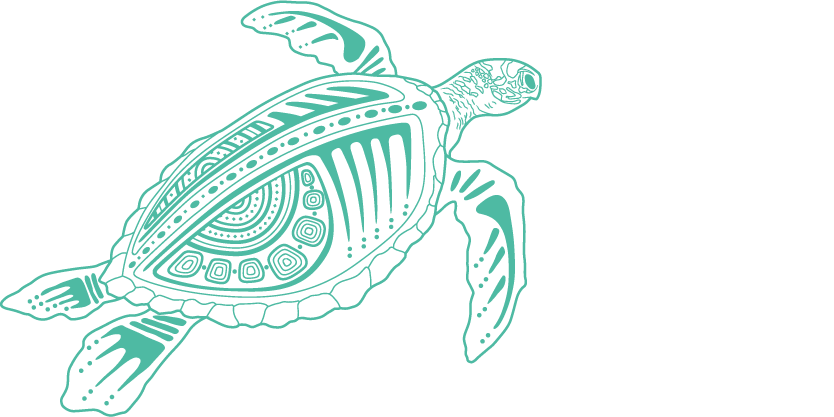The lagoon floor encompasses the non-emergent seafloor of the continental shelf and represents approximately 61 per cent of the Region.5 This huge area supports thousands of species, many of which were unknown before baseline surveys in the early 2000s.201 A variety of lagoon floor ecosystems can be identified according to their unique biophysical attributes including substrate type, water clarity, and presence of characteristic flora and fauna.33,202 Lagoon floor habitats vary from muddy, silty, and sandy sediments of terrestrial origin in inshore areas to carbonate sands and gravels of biological origin further offshore.203 Where conditions are suitable (such as hardened areas of ancient shorelines204,205), more species-rich and structurally complex conglomerations of algae, sponges, bivalves, soft corals, and other sessile organisms are found.203,206 Palaeochannels (ancient riverbeds) cross the lagoon floor in several areas. These geological features provide insight into past river flows and climate conditions 207 and some remnant palaeochannels are important conduits for water movement between continental slope and lagoon floor habitats.208 The lagoon floor houses a wealth of historic shipwrecks and associated artefacts (Section 4.4.3) and likely evidence of early occupation of the Region by First Nations peoples.15 Lagoon floor habits are economically important, supporting fisheries for prawns, scallops and sea cucumbers.5
Monitoring the lagoon floor presents an enormous logistical challenge
Knowledge of the condition (and trend in condition) of lagoon floor habitats is limited. Despite its importance, monitoring the lagoon floor presents an enormous logistical challenge for researchers.209 Survey technologies, such as remotely operated underwater vehicles, advanced video analytics, and environmental DNA (Section 6.2.3) are poised to enhance understanding of lagoon floor habitats in coming years.24,210
Lagoon floor habitats can be affected by poor water quality, especially the presence of suspended sediments and nutrients that promote the growth of phytoplankton in the overlying water column. Sediments can smother benthic organisms and reduce light penetration, affecting photosynthetic organisms, such as benthic algae, seagrasses, and symbiotic zooxanthellae. Human activities, such as trawling,211 dredging, and anchoring can cause physical damage to seafloor habitats and resuspend sediment, which affects water quality. Fishing, pollutants in land-based runoff and storms can also affect the integrity of lagoon floor ecosystems. Rising water temperatures are a threat, especially to sessile benthic organisms that cannot readily migrate as adults to avoid heat stress.212
The lagoon floor encompasses a wide diversity of habitats and species with varying sensitivity and exposure to anthropogenic impacts. Although not systematically monitored, much of the lagoon floor is exposed to increasing sea temperatures, with potential impacts to heat-sensitive species. Some areas also continue to be affected by fishing, anchoring and changes in water quality. Trend in condition has been assessed as stable since 2019 but the threats posed by climate change have not abated.


